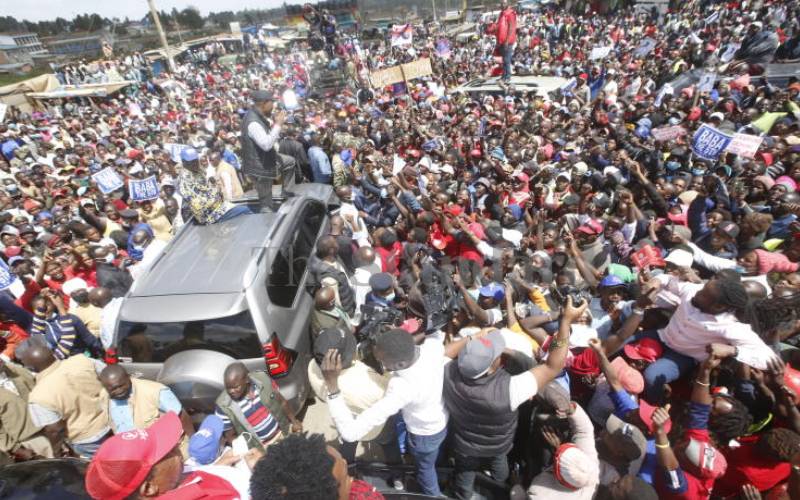
ODM leader Raila Odinga campaigning with Nakuru Governor Lee Kinyanjui in Molo, Nakuru County, March 2,2022. [Kipsang Joseph, Standard]
Kenya’s Rift Valley region is a rich political cocktail. This cosmos of the entire Kenyan nation has ties that would ordinarily bind clusters of populations while also distinguishing each from the rest, and with it their political choices, beyond the usual ethnic considerations. Political ethnic affiliations, however, continue to rule the way people vote, with the leanings of key regional leaders pointing out the way forward.